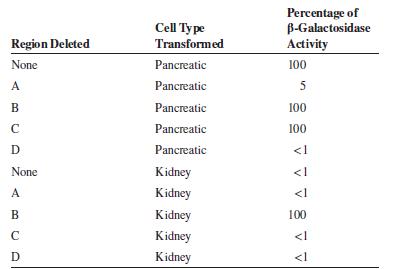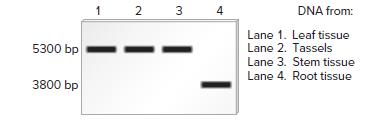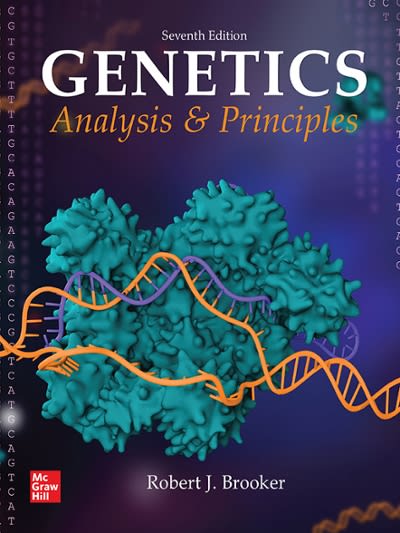You need to understand the approach described in question 3 in More Genetic TIPS before answering this
Question:
You need to understand the approach described in question 3 in More Genetic TIPS before answering this question. A gene that is normally expressed in pancreatic cells was cloned and then subjected to promoter bashing. As shown here, four regions, labeled A–D, were individually deleted, and then the DNA was transformed into pancreatic cells or into kidney cells.

The data in the following table are the results from this experiment.

Assume that the upstream region has one silencer and one enhancer, and answer the following questions:
A. Where are the silencer and enhancer located?
B. Why don’t we detect the presence of the silencer in the pancreatic cells?
C. Why isn’t this gene normally expressed in kidney cells?
Question 3:
Restriction enzymes, are enzymes that recognize a particular DNA sequence and cleave the DNA (along the DNA backbone) at that site. The restriction enzyme known as NotI recognizes the sequence 5′–GCGGCCGC–3′
3′–CGCCGGCG–5′
However, if the cytosines in this sequence have been methylated, NotI will not cleave the DNA at this site. For this reason, NotI is commonly used to investigate the methylation state of CpG islands.
A researcher has studied a gene, which we will call gene T, that is found in corn. This gene encodes a transporter involved in the uptake of phosphate from the soil. A CpG island is located near the core promoter of gene T. The CpG island has a single NotI site.
The arrangement of gene T is shown here.

A SalI restriction site is located upstream from the CpG island, and an EcoRI restriction site is located near the end of the coding sequence for gene T. The distance between the SalI and NotI sites is 1500 bp, and the distance between the NotI and EcoRI sites is 3800 bp. No other sites for SalI, NotI, or EcoRI are found in this region.
Here is the question. Let’s suppose a researcher has isolated DNA samples from four different tissues in a corn plant: the leaf, the tassel, a section of stem, and a section of root. The DNA was then digested with all three restriction enzymes, separated by gel electrophoresis, and then probed with a labeled DNA fragment complementary to the gene T coding sequence. The results are shown here.

In which type of tissue is the CpG island methylated? Does this make sense based on the function of the protein encoded by gene T?
Step by Step Answer:






